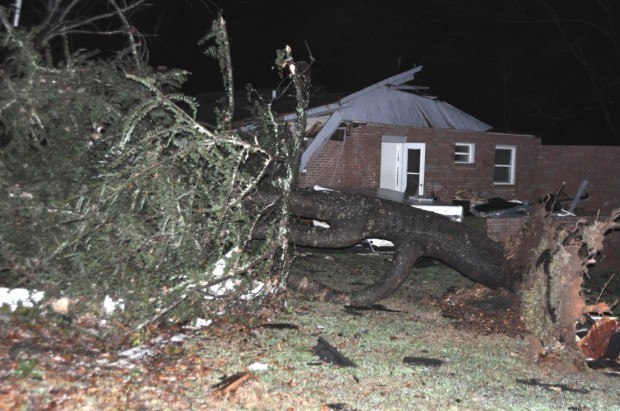North Carolina’s two residual homeowners insurance markets have jointly issued $500 million in pre-event catastrophe bonds to ensure they have enough money on hand to quickly pay claims following hurricanes and other named storms.
The North Carolina Joint Underwriting Association and North Carolina Insurance Underwriting Association issued the $500 million in catastrophic bonds through their newly formed entity Tar Heel Re Ltd in April.
The NCIUA operates the so-called Beach Plan, which provides homeowners coverage along 18 coastal counties and the barrier islands. The NCJUA oversees the state’s FAIR plan, which offers similar coverage in the rest of the state.
To streamline the operation of the two markets and spread the markets exposure and risk, the NCJUA and NAIUA, also known as the “windpool,” share the same computer systems, management, and other resources.
As of January 1, the windpool had a total of 312,187 policyholders and in 2012 had an annual premium of $385 million with an exposure of roughly $90 billion.
NCJUA/NCIUA General Manager Gina Schwitzgebel said the $500 million bond deal is the fourth time the windpool has accessed the capital market to help fund the state’s hurricane and tropical cyclone risk.
Most recently, the windpool in 2011 through its Johnston Re Bond, secured $201 million in funding. However, those funds can only be accessed after the windpool has losses in excess of $3.4 billion per event.
That left a lot of small events like tropical cyclones and smaller hurricanes out of reach of the bond proceeds and forced the windpool to rely on more expensive reinsurance.
Under the Tar Heel bond, the funds can be accessed when the windpool incurs $2 billion in losses whether they come from one major hurricane or several smaller named hurricanes or tropical storms.
Having that flexibility was a major goal of moving forward with the Tar Heel Re deal.
“This transaction, which employs an annual aggregate structure with an expanded definition of a name storm, provides our associations with an improved post-event cash flow at a competitive price,” said NCJUA/NCIUA Chairman Glen Hahn.
Even with this year’s $500 million bond deal, the associations’ board will soon have to contemplate further action regarding next year’s hurricane season. In 2014, the associations have $201 million in bonds that will expire.
Schwitzgebel said creating a financial structure that like the Tar Heel Re deal that provides aggregate coverage would certainly be high on the board’s list.
She said that the Tar Heel deal was initially set at $250 million and later upped to $500 million due to investor interest. “I feel confident that the board of directors will evaluate all sources of potential risk funding to provide the most comprehensive coverage and terms at the most effective price for both associations,” said Schwitzgebel.
Chi Hum, global head of ILS Distribution for GC Securities, which handled the Tar Heel deal, said he is optimistic that similar deals will be available to the windpool.
“Amongst residual market entities, NCJUA/NCIUA has pioneered the optimization of traditional reinsurance and capital markets to achieve a more robust program.” said Hum. “We expect that investors will look forward to supporting future issues.”
The bond deal comes as North Carolina homeowners are absorbing a statewide average seven percent rate hike, which went into effect July 1. It is the first increase since 2009.
Insurance Commissioner Wayne Goodwin signed off on the increase last March as part of a settlement agreement with the North Carolina Rate Bureau.
The rate bureau, which files rates on behalf of the industry, had initially requested a 17.7 percent increase. While Goodwin objected to size of the increase, he nonetheless acknowledged that some increase was necessary due to rising reinsurance costs.
“We face a great challenge in making sure that homeowners insurance is not only affordable, but available, to consumers across the state,” said Goodwin at the time. “I feel this settlement helps strike the balance.”
While the seven percent is a statewide average, the rate increases will vary by region.
For example, rates could rise by as much as 8.6 percent in some coastal counties including, the cities of Wilmington, Jacksonville, and Greenville. In the cities of Charlotte, Raleigh and Durham, homeowners could see average rate increases of between 8.4 percent and 2.8 percent. In the far western areas of the state, rates on average are set to rise 7.7 percent.
The 2013 rate increase is the first since 2009 when the rate bureau and Goodwin reach an agreed on a 4.05 percent increase, which took effect in May 2009.





















 Nearly Half of 100 Largest P/C Insurers Destroy Value: ACORD
Nearly Half of 100 Largest P/C Insurers Destroy Value: ACORD  Good Times for U.S. P/C Insurers May Not Last; Auto Challenges Ahead
Good Times for U.S. P/C Insurers May Not Last; Auto Challenges Ahead  Why ‘Good Enough’ Is Killing Insurance: The Hidden Cost of Satisficing
Why ‘Good Enough’ Is Killing Insurance: The Hidden Cost of Satisficing  Adjusters Launch ‘CarFax for Insurance Claims’ to Vet Carriers’ Damage Estimates
Adjusters Launch ‘CarFax for Insurance Claims’ to Vet Carriers’ Damage Estimates 



